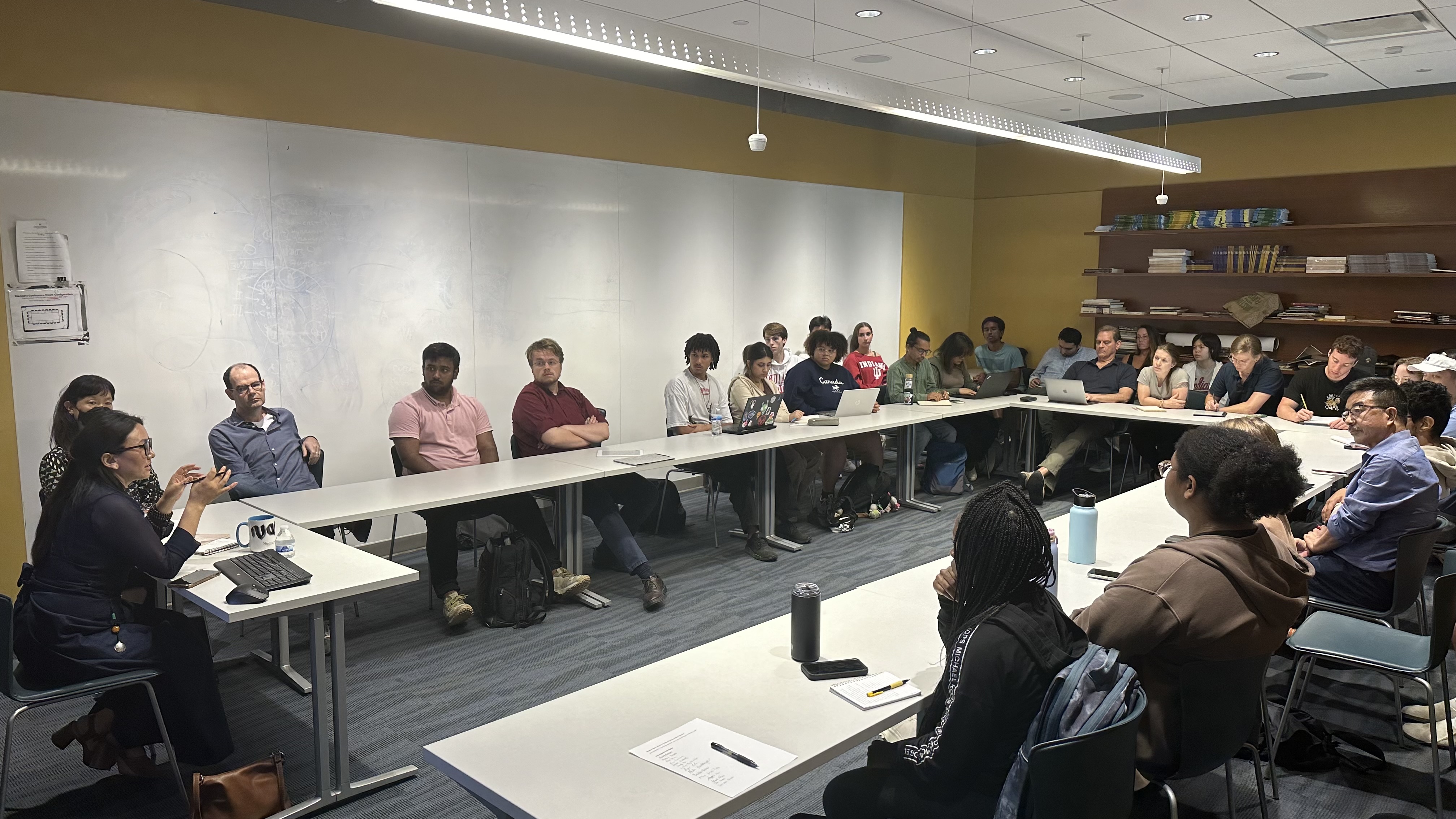Ms. Pema Tso, Editor in Chief of the Tibet Times, came to Indiana University on September 24th, to talk to us about Tibetan Muslims in India, who like many other Tibetans, live in exile. Ms. Pema Tso is a journalist, who rose in the ranks to become editor in chief of Tibetan Times, a Tibetan newspaper based in India, which also comes in an English edition. The newspaper has done several interviews with members of the Tibetan Muslim community. These interviews include reporting on interactions between His Holiness the Dalai Lama and Tibetan Muslims, a life story piece of a Tibetan Muslim man, a piece on the history of a Tibetan Muslim restaurant, and a tour of and interview on the Tibetan Muslim school. Ms. Pema Tso discussed some history of the communities, such as the Lhasa Khache community which resided in the Lhasa region beginning in at least the 14th century, and the Muslim community of Eastern Tibet, which became Muslim during the Republic of China period in the 1940s. She also discussed the exile of the Lhasa Khache community. They migrated to India in the 1960s. Three communities, around 2000 people, are in Srinagar, India. Here, they have a Tibetan Public School. In addition, smaller groups of Tibetan Muslims live in Nepal and Darjeeling and Kalimpong, India. Ms. Pema Tso explained that Tibetan Muslims face difficulties in their exile. There are disputes over their legal status, with the Indian government recognizing them as citizens, but their state government recognizing them as refugees. Thus, they cannot get identification booklets. Meanwhile, the younger generation of Tibetan Muslims do not have the knowledge of Tibetan language that their parents and grandparents have, as they have very limited resources to study the language. For example, many Tibetan teachers do not want to live in such far areas. She also notes that there is some gap between the Tibetan Muslim community and the Tibetan Buddhist community. However, she emphasized that there is much harmony between the two groups as they all consider each other Tibetan, with a shared culture and language. Ms. Pema Tso underscored that the only difference between the two groups is religion, but that the Tibetan Muslim community and HH the Dalai Lama have much respect for one another.
Ms. Pema Tso taught the audience some further details about the cohesiveness of the Tibetan Muslim and Tibetan Buddhist communities. She said that before 1959, Tibetan Muslim merchants were a small minority in Tibet, but that they were essential to the community as traders who brought needed items, as well as news from outside Tibet. They would usually come from the area of East India. These merchants integrated very well into Tibetan society, as they married Tibetan Buddhist women, who then converted to Islam. Thus, the communities are very linked. It was the 5th Dalai Lama (1617-1682), who allowed Muslim merchants to enter Tibet. He also allowed these merchants to have land for homes, mosques, and marketplaces. They were even allowed to sell in the main market of Lhasa, the capital of Tibet. Tibetan Muslims also had their own courts and elected community leader to represent them. In addition, they were allowed schools for studying the Quran and the Urdu language. The 14th Dalai Lama had to flee Tibet in 1959, and he visited Tibetan Muslims in Srinagar in subsequent years (1974, 1984, and 2012). He also supported the Tibetan Public School, and has emphasized that he feels close to the Tibetan Muslims as he grew up around them in his birthplace. Ms. Pema Tso pointed out that the closeness is mutual as Tibetan Muslims come to meetings with HH the Dalai Lama.
In her conclusion, Ms. Pema Tso emphasized the importance of the Tibetan Muslim community and their connection to the broader Tibetan community. She expressed a desire to write a book on Tibetan Muslims in the Tibetan language, since there is only one book currently about Tibetan Muslims in Tibetan. Ms. Pema Tso underscored that Tibetan Buddhists and Tibetan Muslims both see each other as the same culturally and consider themselves all a part of the Tibetan community.


